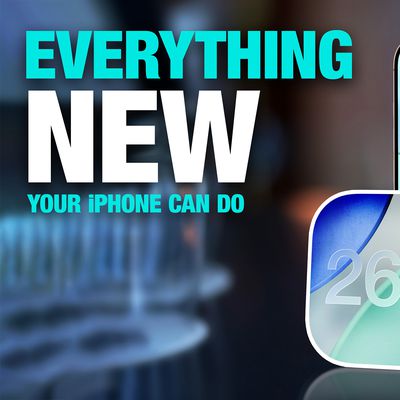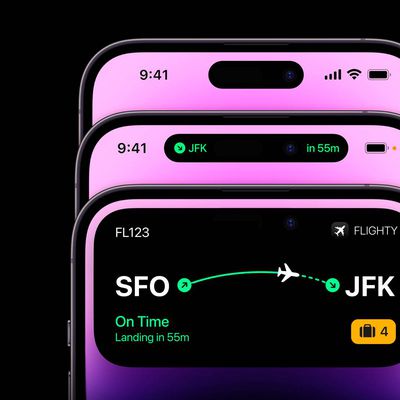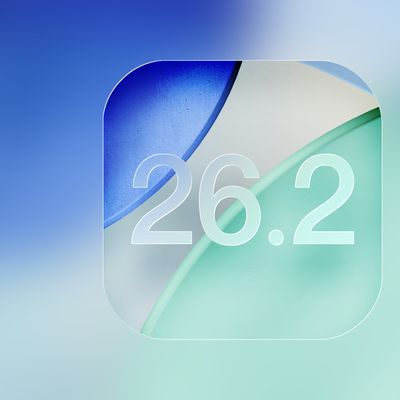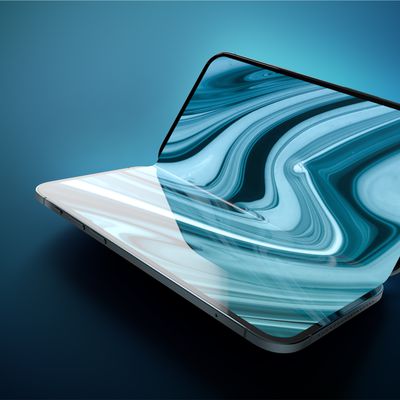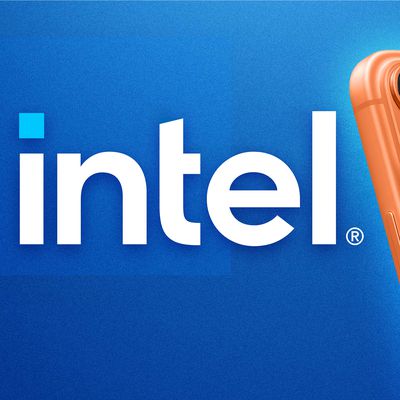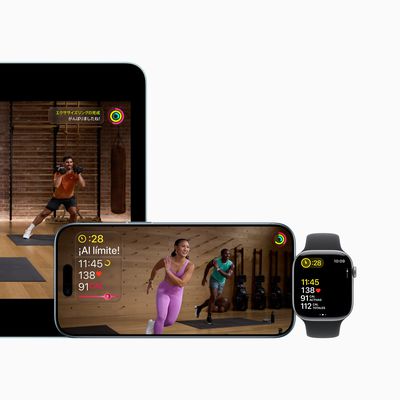Steve Jobs' Vision of Widespread Free Public Wi-Fi Guest Networks Yet to Take Hold
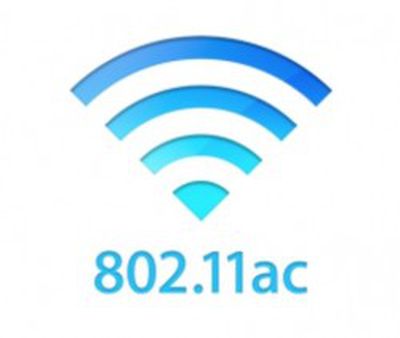 In a commentary piece arguing for users to open up free guest networks on their Wi-Fi access points to the public, Re/code's Walt Mossberg shares the story of how Steve Jobs saw such networks as the future of Internet access, supplementing cellular networks to allow for faster and broader access for users.
In a commentary piece arguing for users to open up free guest networks on their Wi-Fi access points to the public, Re/code's Walt Mossberg shares the story of how Steve Jobs saw such networks as the future of Internet access, supplementing cellular networks to allow for faster and broader access for users.
Mossberg notes that Jobs envisioned the open Wi-Fi networks during development of the original iPhone, which was hampered by a "lousy, sluggish cellular-data network." An open Wi-Fi network built on the cooperation of both business and private citizens who were wiling to share their Wi-Fi connections with strangers would have addressed this problem by offering another connectivity option for iPhone users.
His idea was to get as many wireless router makers as possible to build in a “guest network” option — essentially a second Wi-Fi network, securely walled off from the rest of the home network, and with its own name. Then, he hoped that the industry would encourage people to share their bandwidth with strangers via these guest networks. That way, a smartphone user could walk around, moving from one Wi-Fi hotspot to another, without logging in — much like people using cellular data move from one cell tower to another.
While there are certainly potential issues with security and bandwidth hogging by guest users, Mossberg argues that these issues are not insurmountable, and in fact some companies have made strides in this area. On a micro level, Apple's AirPort base stations have supported guest networks since 2009, and on a broader scale, some Internet service providers such as Comcast have been working to turn customers' home routers into Wi-Fi access points available to other customers as a public network.
Use of Wi-Fi to supplement cellular coverage is also growing, with one example being T-Mobile's effort in the U.S. to route phone calls over a more reliable Wi-Fi network instead of the cellular connection. Apple is adding iPhone support for the feature as part of iOS 8 later this year.
Popular Stories
Apple is about to release iOS 26.2, the second major point update for iPhones since iOS 26 was rolled out in September, and there are at least 15 notable changes and improvements worth checking out. We've rounded them up below.
Apple is expected to roll out iOS 26.2 to compatible devices sometime between December 8 and December 16. When the update drops, you can check Apple's servers for the ...
Apple is actively testing under-screen Face ID for next year's iPhone 18 Pro models using a special "spliced micro-transparent glass" window built into the display, claims a Chinese leaker.
According to "Smart Pikachu," a Weibo account that has previously shared accurate supply-chain details on Chinese Android hardware, Apple is testing the special glass as a way to let the TrueDepth...
Apple today seeded the second release candidate version of iOS 26.2 to developers and public beta testers, with the software coming one week after Apple seeded the first RC. The release candidate represents the final version iOS 26.2 that will be provided to the public if no further bugs are found.
Registered developers and public beta testers can download the betas from the Settings app on...
Apple has ordered 22 million OLED panels from Samsung Display for the first foldable iPhone, signaling a significantly larger production target than the display industry had previously anticipated, ET News reports.
In the now-seemingly deleted report, ET News claimed that Samsung plans to mass-produce 11 million inward-folding OLED displays for Apple next year, as well as 11 million...
Apple's iPhone development roadmap runs several years into the future and the company is continually working with suppliers on several successive iPhone models at the same time, which is why we often get rumored features months ahead of launch. The iPhone 18 series is no different, and we already have a good idea of what to expect for the iPhone 18 Pro and iPhone 18 Pro Max.
One thing worth...
Apple's chipmaking chief Johny Srouji has reportedly indicated that he plans to continue working for the company for the foreseeable future.
"I love my team, and I love my job at Apple, and I don't plan on leaving anytime soon," said Srouji, in a memo obtained by Bloomberg's Mark Gurman.
Here is Srouji's full memo, as shared by Bloomberg:I know you've been reading all kind of rumors and...
Apple's senior vice president of hardware technologies Johny Srouji could be the next leading executive to leave the company amid an alarming exodus of leading employees, Bloomberg's Mark Gurman reports.
Srouji apparently recently told CEO Tim Cook that he is "seriously considering leaving" in the near future. He intends to join another company if he departs. Srouji leads Apple's chip design ...
Intel is expected to begin supplying some Mac and iPad chips in a few years, and the latest rumor claims the partnership might extend to the iPhone.
In a research note with investment firm GF Securities this week, obtained by MacRumors, analyst Jeff Pu said he and his colleagues "now expect" Intel to reach a supply deal with Apple for at least some non-pro iPhone chips starting in 2028....
Apple and Google are teaming up to make it easier for users to switch between iPhone and Android smartphones, according to 9to5Google. There is a new Android Canary build available today that simplifies data transfer between two smartphones, and Apple is going to implement the functionality in an upcoming iOS 26 beta.
Apple already has a Move to iOS app for transferring data from an Android...
Apple today announced that Fitness+ is expanding to 28 new markets on December 15 in the service's largest international rollout since launch, accompanied by new language dubbing and a K-Pop music genre.
Apple Fitness+ will become available in Chile, Hong Kong, India, the Netherlands, Singapore, Taiwan, and additional regions on December 15, with Japan scheduled to follow early next year....
 In a commentary piece arguing for users to open up free guest networks on their Wi-Fi access points to the public, Re/code's Walt Mossberg shares the story of how Steve Jobs saw such networks as the future of Internet access, supplementing cellular networks to allow for faster and broader access for users.
In a commentary piece arguing for users to open up free guest networks on their Wi-Fi access points to the public, Re/code's Walt Mossberg shares the story of how Steve Jobs saw such networks as the future of Internet access, supplementing cellular networks to allow for faster and broader access for users. 

